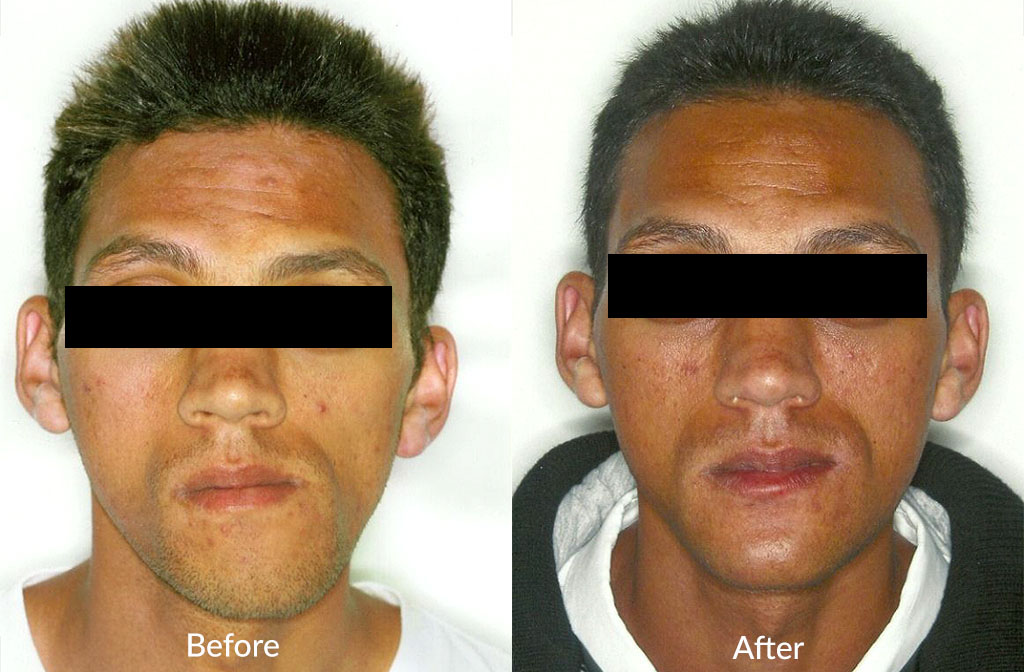Orthognathic Surgery
Orthognathic surgery (also known as jaw surgery) readjusts the jaws and teeth to improve their functionality and your appearance. Orthognathic surgery is usually performed entirely inside your mouth, leaving no facial scars on your chin, jaw or around your mouth.
Jaw surgery may be performed on the upper jaw (maxillary osteotomy), lower jaw (mandibular osteotomy) or both.
A maxillary osteotomy may be performed to correct an upper jaw that has significantly receded, a cross bite, an open bite, and jaws with too many or too few visible teeth. With a maxillary osteotomy, incisions are made inside of the mouth, ensuring that there are no visible scars on the face. Once a jaw is realigned, tiny screws – which are smaller than a bracket used for braces – are placed into the mouth to hold the bone in its new position. The screws become integrated with the bone structure over time.
A mandibular osteotomy may be performed to correct a lower jaw that has significantly receded. With a mandibular osteotomy, incisions are made behind the molars and lengthwise down the jawbone so the front of the jaw can move as one unit. Once the procedure had been completed, screws will be placed into the mouth to hold the jawbone in place until it heals.
Orthognathic surgery combines jaw surgery with orthodontics, to correct jaws that are misaligned. The benefits of orthognathic surgery includes:
- Make biting and chewing easier and improve chewing overall
- Minimize excessive wear and breakdown of the teeth over years of use
- Correct facial imbalance, improving the appearance of deficient chins.
- Restore balance (symmetry) to middle and lower facial features
- Improve "gummy" smiles, where the lips don't fully close or pull upward and show large areas of the gums
- Improve "toothless" smiles, where the lips cover all the teeth
- Reduce the risk of temporomandibular joint (TMJ) disorder and other jaw problems
- Repair and correct post-traumatic facial injury, defects and abnormalities
- Provide relief for sleep apnoea


